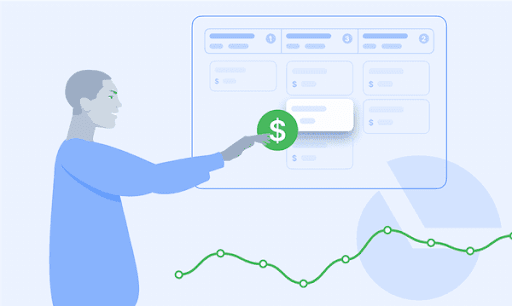In today’s competitive business world, having a reliable and efficient Customer Relationship Management system is essential for any organization looking to grow and thrive. However, for small and medium-sized businesses with limited budgets, investing in an expensive CRM software can be a daunting prospect. Fortunately, there are many ways to save money on CRM systems without compromising on quality or functionality. Here are five practical tips to help you get the best cheap CRM for your business:
1. Consider Cloud-based CRMs
One of the easiest ways to save money on CRM systems is to opt for cloud-based solutions. These systems are hosted on the vendor’s servers, eliminating the need for expensive hardware and IT infrastructure. Cloud-based CRMs are also known for their flexibility and scalability, making them ideal for businesses of all sizes. Many cloud-based CRMs offer a free trial period or a low-cost subscription model, which can help you test the software before making a long-term commitment.
2. Look for Open-source CRMs
Another option to save money on CRM systems is to consider open-source solutions. These are software programs that are free to use, modify, and distribute. Open-source CRMs offer businesses complete control over the software and can be customized to meet specific needs. However, open-source CRMs may require a certain level of technical expertise to install and maintain, making them more suitable for businesses with in-house IT teams.
3. Choose a CRM with Basic Features
When it comes to choosing a CRM system, more features do not necessarily mean better quality. In fact, many expensive CRMs are loaded with features that businesses may never use. To save money, consider a CRM that offers basic features such as contact management, lead tracking, and pipeline management. These features are essential for most businesses and can help you save money without sacrificing functionality.
4. Negotiate with Vendors
When shopping for a CRM system, don’t be afraid to negotiate with vendors for better pricing. Many vendors are willing to offer discounts or promotions to attract new customers. It’s also a good idea to shop around and compare pricing from different vendors to get the best deal.
5. Take Advantage of Free CRM Systems
Finally, there are many free CRM systems available that can help businesses save money. While these systems may not offer the same level of functionality as paid solutions, they can still be useful for businesses with limited budgets. Some popular free CRM systems include Bitrix24, Zoho CRM, and Agile CRM.
6. Opt for Customizable Workflows
Another way to save money on CRM systems is to opt for customizable workflows. These workflows allow businesses to automate their processes and streamline their operations, reducing the need for manual labor and improving productivity. Customizable workflows can also be tailored to meet specific business needs and can be adjusted as the business grows and evolves.
7. Consider on-premise CRMs
While cloud-based CRMs are a popular option for businesses, on-premise CRMs are also worth considering. On-premise CRMs are installed locally on the business’s servers, giving businesses complete control over their data and security. While on-premise CRMs may require more upfront investment, they can be a cost-effective option in the long run, especially for larger businesses.
8. Assess Integration Capabilities
When choosing a CRM system, it’s essential to assess its integration capabilities. Integration with other software tools, such as email marketing, social media, and accounting software, can help businesses save time and money by automating their workflows and reducing manual labor. Integration capabilities should be a significant consideration when choosing a CRM system, and businesses should ensure that their chosen CRM can integrate with their existing software stack.
9. Invest in Training and Support
Investing in training and support can help businesses get the most out of their CRM system and save money in the long run. Proper training can help businesses use the software more effectively, reducing the need for manual labor and increasing productivity. Support from the vendor can also help businesses resolve any issues that may arise, reducing downtime and improving efficiency.
10. Consider Total Cost of Ownership
When evaluating CRM systems, it’s essential to consider the total cost of ownership (TCO). TCO includes not only the upfront cost of the software but also the ongoing costs, such as maintenance, upgrades, and training. Businesses should evaluate the TCO of each CRM system they are considering to ensure that they are getting the best value for their money.
In conclusion, there are many ways for businesses to save money on CRM systems without sacrificing quality or functionality. By considering cloud-based and open-source CRMs, choosing a CRM with basic features, negotiating with vendors, taking advantage of free CRM systems, opting for customizable workflows, considering on-premise CRMs, assessing integration capabilities, investing in training and support, and evaluating TCO, businesses can find the best cheap CRM for their needs and achieve their goals without breaking the bank.


